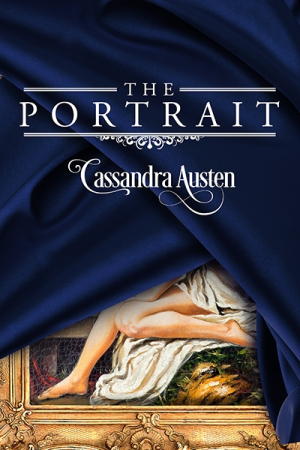
The Portrait
The Portrait is a fun Regency romance that’s steeped in historical details.
Immersed in the period of the second Napoleonic War, Cassandra Austen’s lively The Portrait is the epitome of a Regency romance. It includes musical performances in Bath, pastoral English landscapes, and courtship scenes that sizzle.
Plucky Lady Catherine Claverton’s confidence is tempered by the fact that one of her legs is “withered,” making it difficult for her to dance, walk without assistance, or take part in social activities. She struggles to overcome her insecurities about her body. After she learns that she’ll inherit more land and power than she expected, Catherine begins to discern who likes her for herself, and who’s more interested in a title than a meaningful marriage. Two men, Lyle Barrington and Captain Jocelyn Avebury, vie for her hand—but there’s more to each of them than Catherine initially surmises.
Avebury is a compelling romantic partner. He’s recently returned from war and is hiding out in Bath for mysterious reasons. His motives, and his true identity, are revealed at a slow pace, as when he walks through the woods alone in contemplation, his private thoughts winding with descriptions of the fields and streams. When he shouts, “England!” at the trees around him, his inner monologue mingles with his surroundings.
The novel otherwise moves with speed, refusing to linger on landscapes or lengthy descriptions as it jumps from parlor to parlor, sticking to interior, domestic scenes. Its conversations become a means of exposition, and backstories about Catherine’s painful relationship with her dying father, her insecurities, and her attraction to her two suitors are delivered through intimate talks with her friends Melinda and Lydia.
Supporting characters are neat foils for Catherine, though her relationships with others sometimes feel too convenient. Lydia happens to be an illegitimate but well-educated daughter from a powerful family; she lives with Catherine, helping both women “keep up appearances.” Her attitude is dry and sharp, a perfect contrast to Catherine’s zestiness. The relationship’s convenience feels stylized, without the organic, appealing messiness of Catherine’s connection to Avebury.
A few plot holes and unexplained motives frustrate the book’s progression, including Catherine’s instinctive fear of Lyle, though the ending itself is satisfying. The language used to describe Catherine’s disability is not modernized in strange contrast to other, contemporary attitudes in the novel, and its ableist tropes are problematic.
The Portrait is a fun Regency romance that’s steeped in historical details.
Reviewed by
Claire Foster
Disclosure: This article is not an endorsement, but a review. The publisher of this book provided free copies of the book and paid a small fee to have their book reviewed by a professional reviewer. Foreword Reviews and Clarion Reviews make no guarantee that the publisher will receive a positive review. Foreword Magazine, Inc. is disclosing this in accordance with the Federal Trade Commission’s 16 CFR, Part 255.
